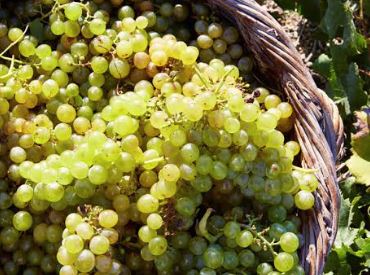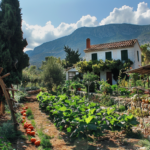Get ready to tantalize your taste buds with the delightful flavors of Assyrtiko, a fabulous Greek wine that is sure to leave you refreshed and craving for more. This exceptional wine, known for its crisp acidity, citrusy notes, and distinctive mineral undertones, hails from the enchanting island of Santorini. With every sip, you will be transported to the picturesque vineyards of Greece, where sunshine and sea breezes work their magic to create a truly unique and invigorating drinking experience. So why wait? Embark on a journey of discovery and treat yourself to the refreshing taste of Assyrtiko.
Background on Assyrtiko
Origin of Assyrtiko
Assyrtiko is an ancient white grape variety that has its roots in Greece. It is primarily grown in the Aegean island of Santorini, although it can also be found in other parts of Greece. The exact origin of Assyrtiko is still uncertain, with some experts believing it to be indigenous to Santorini, while others suggest that it may have been brought to the island by early settlers. Regardless of its origins, Assyrtiko has become synonymous with Santorini and is a proud representative of Greek winemaking.

Cultivation of Assyrtiko
The cultivation of Assyrtiko is a labor of love and requires a great deal of skill and expertise. This grape variety thrives in the harsh and arid conditions of Santorini, where volcanic soils and strong winds contribute to its distinct characteristics. The vines are trained low to the ground in a unique basket shape called “kouloura” to protect them from the wind and maximize their exposure to sunlight. Assyrtiko’s strong root system allows it to draw moisture from the volcanic soils, resulting in grapes that are concentrated in flavor and mineral notes.
Characteristics of Assyrtiko
Assyrtiko is known for its vibrant acidity, which gives it a refreshing and crisp taste. It is often described as having citrus notes, with flavors of lemon, grapefruit, and lime. These citrus flavors are complemented by mineral undertones, which are a result of the volcanic soils in which the grape is grown. Assyrtiko wines have a distinct and complex character, with a long and lingering finish. They are known for their ageability, with some wines able to develop and improve for decades.
Santorini: The Home of Assyrtiko
Introduction to Santorini
Santorini is an enchanting island in the Aegean Sea and is widely considered the birthplace of Assyrtiko. With its picturesque white houses perched on cliffs, stunning sunsets, and breathtaking views of the sea, Santorini is a dream destination for many travelers. The island’s unique landscape, shaped by volcanic activity, provides the perfect setting for grape cultivation. Santorini is not only known for its Assyrtiko wines but also for its other grape varieties, traditional winemaking methods, and warm Greek hospitality.
Unique Terroir of Santorini
One of the key factors that contributes to the unique character of Assyrtiko wines from Santorini is the island’s terroir. The volcanic soils, rich in minerals, impart distinct flavors and aromas to the grapes. The volcanic ash acts as a natural filter, retaining moisture and protecting the vines from excessive heat. The island’s strong winds, known as “meltemi,” help to cool the grapes and prevent disease, while also shaping the vines’ growth patterns. These elements combine to create a terroir that is truly one-of-a-kind and results in wines that capture the essence of Santorini.
Traditional winemaking methods in Santorini
Winemaking in Santorini has a long and rich history, dating back thousands of years. The traditional winemaking methods used on the island have been passed down through generations, preserving the unique character of Assyrtiko wines. One of the most distinctive methods is “kouloura,” which involves training the vines low to the ground in a circular shape. This method helps to protect the fruit from harsh winds and intense sunlight while maximizing the grapes’ exposure to the volcanic soil. Another traditional technique is “sun-drying,” where grapes are left to dry in the sun before pressing, creating a sweet wine known as “Vinsanto.” These traditional winemaking methods, combined with modern techniques, result in wines that reflect the rich cultural heritage of Santorini.
Aromatic Profile of Assyrtiko
Crisp Acidity
One of the defining characteristics of Assyrtiko is its vibrant and refreshing acidity. This acidity gives the wine a lively and zesty character that is perfect for quenching your thirst on a hot summer’s day. The high acidity of Assyrtiko wines also makes them incredibly food-friendly, allowing them to cut through rich and fatty dishes, balancing the flavors and cleansing the palate. Whether enjoyed on its own or paired with food, the crisp acidity of Assyrtiko is a delight for the senses.
Citrus Notes
Assyrtiko wines are known for their citrusy flavors, which add a bright and vibrant dimension to the wine. Lemon, grapefruit, and lime are often the dominant citrus notes found in Assyrtiko wines, lending them a refreshing and invigorating quality. These citrus flavors are often accompanied by a hint of zestiness, adding an extra layer of complexity to the wine. The citrus notes in Assyrtiko make it an excellent companion for seafood dishes, as the acidity and fruitiness of the wine complement the delicate flavors of the seafood.
Mineral Undertones
The volcanic soils of Santorini contribute to the unique mineral undertones found in Assyrtiko wines. These mineral notes add depth and complexity to the wine, giving it a distinct and intriguing character. The volcanic ash, which is rich in minerals such as iron and calcium, interacts with the vines’ root systems, imparting these flavors into the grapes. The mineral undertones in Assyrtiko wines provide a sense of place, allowing you to taste the terroir of Santorini with every sip.
Food Pairing with Assyrtiko
Seafood Dishes
Assyrtiko’s crisp acidity and citrus flavors make it an ideal pairing for seafood dishes. The acidity of the wine cuts through the richness of the seafood, while the citrus notes complement the delicate flavors of the fish. Grilled fish, shrimp, scallops, and oysters all pair beautifully with Assyrtiko. Whether you’re enjoying a simple seafood salad or a more elaborate seafood platter, Assyrtiko’s refreshing and vibrant character will enhance the flavors of the dish, creating a harmonious pairing.
Mediterranean Cuisine
Assyrtiko is a versatile wine that pairs well with a wide range of Mediterranean dishes. The wine’s acidity and citrus notes make it a great match for dishes such as Greek salads, grilled vegetables, and tzatziki. The vibrant acidity of Assyrtiko also complements the tangy flavors of feta cheese and olives, often found in Mediterranean cuisine. Whether you’re indulging in a mezze platter, a hearty moussaka, or a simple plate of grilled halloumi, Assyrtiko is sure to elevate your dining experience.
Cheese Selection
Assyrtiko’s versatility extends to cheese pairings as well. The wine’s crisp acidity and citrus notes provide a refreshing contrast to the creamy and salty flavors of cheese. Feta cheese, a staple in Greek cuisine, is a natural match for Assyrtiko. The wine’s acidity cuts through the richness of the feta, while the citrus notes enhance its tangy flavors. Other cheeses that pair well with Assyrtiko include goat cheese, pecorino, and manchego. Whether enjoyed on a cheese board or incorporated into a recipe, Assyrtiko brings out the best in these flavorful cheeses.
Assyrtiko Winemaking Techniques
Late Harvest Assyrtiko
Late harvest Assyrtiko is a style of wine that is made from grapes that are left on the vine longer than usual, allowing them to reach a higher level of ripeness and sweetness. This extended hang time results in grapes with more concentrated flavors and sugars, producing a luscious and complex wine. Late harvest Assyrtiko wines often exhibit flavors of ripe tropical fruits, honey, and a hint of spice. These wines are typically enjoyed as a dessert wine, pairing well with rich and creamy desserts or strong cheeses.
Barrel Aged Assyrtiko
Barrel aging is a winemaking technique that involves fermenting and aging the wine in oak barrels. This process imparts additional flavors and aromas to the wine, adding complexity and depth. Barrel-aged Assyrtiko wines take on a richer and creamier texture, with notes of vanilla, toast, and butterscotch. The oak influence is subtle, allowing the fruit flavors and mineral undertones of the wine to shine through. Barrel-aged Assyrtiko wines pair well with grilled chicken, roasted pork, and creamy pasta dishes.
Sparkling Assyrtiko
Sparkling Assyrtiko is a recent addition to the Assyrtiko family, offering a fresh and lively alternative to still wines. The sparkling version is made using the traditional method, where the wine undergoes a second fermentation in the bottle, producing bubbles of carbon dioxide. Sparkling Assyrtiko wines are crisp and refreshing, with a fine mousse and vibrant acidity. They are perfect for celebrations, as an aperitif, or paired with light and delicate dishes, such as fresh salads or seafood appetizers.
Distinctive Styles of Assyrtiko
Assyrtiko in Dry White Wines
Dry white Assyrtiko wines are the most commonly produced style and showcase the grape’s vibrant acidity, citrus flavors, and mineral undertones. These wines are often enjoyed as an aperitif or paired with a variety of dishes, such as seafood, salads, and Mediterranean cuisine. Dry Assyrtiko wines can range from light and crisp to more full-bodied and textured, depending on the winemaking techniques used. Regardless of the style, dry Assyrtiko wines are known for their refreshing and invigorating character.
Assyrtiko in Sweet Wines
Assyrtiko can also be used to produce sweet wines, which are often enjoyed as a dessert wine. The naturally high acidity of the grape provides a perfect balance to the sweetness, preventing the wine from becoming cloying. Sweet Assyrtiko wines are made using late harvest or sun-dried grapes, resulting in wines with concentrated flavors of ripe fruits, honey, and caramel. These wines are often paired with desserts such as fruit tarts, cheesecake, or blue cheese.
Assyrtiko in Sparkling Wines
Sparkling Assyrtiko wines offer a lively and effervescent twist on the traditional still versions. These wines undergo a second fermentation in the bottle, creating bubbles of carbon dioxide and adding a playful fizz to the wine. Sparkling Assyrtiko wines are refreshing and crisp, with a fine and persistent mousse. They are perfect for toasting and celebrating, as well as for pairing with light and delicate dishes. Sparkling Assyrtiko is a vibrant and fun expression of the grape’s unique characteristics.
Exploring Other Greek Wines
Xinomavro: The Powerful Red
Xinomavro is one of Greece’s most celebrated red grape varieties and is often referred to as the “Burgundy of Greece.” This versatile grape produces red wines with complex flavors of red fruits, spices, and earthy undertones. Xinomavro wines are known for their high tannins and refreshing acidity, which give them great aging potential. These wines pair well with grilled meats, hearty stews, and aged cheeses.
Moschofilero: The Floral White
Moschofilero is a fragrant and floral white grape variety that is indigenous to Greece. This aromatic grape produces wines with intense floral aromas, vibrant acidity, and flavors of stone fruits and citrus. Moschofilero wines are often enjoyed as an aperitif or paired with light dishes such as salads, seafood, and Asian cuisine. The bright and floral character of Moschofilero makes it a delightful choice for those seeking a refreshing and aromatic white wine.
Mavrodaphne: The Sweet Fortified
Mavrodaphne is a Greek red grape variety that is typically used to produce sweet fortified wines. These wines are made by adding grape spirits to stop fermentation, resulting in a wine with higher alcohol content and residual sugar. Mavrodaphne wines are rich and full-bodied, with flavors of dried fruits, spices, and caramel. They are often enjoyed as a dessert wine, paired with chocolate desserts or aged cheeses. Mavrodaphne’s sweet and intense character is a true indulgence for those with a sweet tooth.
Assyrtiko’s Rising Popularity
Global Recognition
In recent years, Assyrtiko has gained increased recognition and popularity on the global wine stage. Wine enthusiasts and critics alike have praised the grape’s unique characteristics and its ability to showcase the terroir of Santorini. Assyrtiko has been featured in prestigious wine competitions and has received numerous accolades, further cementing its reputation as a world-class grape variety.
Award-Winning Assyrtiko Wineries
Many wineries in Santorini have dedicated themselves to producing exceptional Assyrtiko wines. These wineries combine traditional winemaking techniques with modern innovations to create wines of outstanding quality. Some notable award-winning wineries include Domaine Sigalas, Gaia Wines, and Hatzidakis Winery. These wineries have played a significant role in elevating the profile of Assyrtiko wines and showcasing their true potential.
Increasing Demand
As the popularity of Greek wines continues to grow, so does the demand for Assyrtiko. Wine lovers around the world are discovering the refreshing taste and unique character of Assyrtiko, making it a sought-after wine both in restaurants and wine shops. The increasing demand has prompted winemakers to explore new regions for grape cultivation, expanding the production of Assyrtiko and ensuring its availability to a wider audience.
Ideal Serving Temperatures for Assyrtiko
Chilled White Wine Temperatures
Assyrtiko is a white wine that is best enjoyed when served chilled. The ideal serving temperature for Assyrtiko is between 8 to 10°C (46 to 50°F). Chilling the wine helps to accentuate its crisp acidity and refreshing character, making it the perfect choice for hot summer days or as an aperitif. It’s important not to overchill the wine, as extremely low temperatures can mask its flavors and aromas.
Cellar Temperature for Aging
For those who prefer to age their Assyrtiko wines, a cellar temperature of around 12 to 14°C (54 to 57°F) is recommended. This temperature range allows the wine to develop and mature slowly, preserving its delicate flavors and evolving into a more complex and nuanced wine. Aging Assyrtiko brings out additional layers of flavors and aromas, revealing the full potential of this remarkable grape variety.
Assyrtiko in High Temperatures
Assyrtiko’s crisp acidity and refreshing character make it an excellent choice for warm weather. In high temperatures, it is advisable to cool the wine down further to around 6 to 8°C (43 to 46°F) before serving. This ensures that the wine remains chilled even in hot conditions and provides a truly refreshing experience. Assyrtiko’s ability to maintain its vibrant character in high temperatures makes it a versatile and enjoyable wine for any occasion.
The Future of Assyrtiko
Promotion and Marketing Efforts
The future of Assyrtiko looks promising, with ongoing efforts to promote and market the grape both domestically and internationally. Greek winemakers and organizations are working together to raise awareness of Assyrtiko and showcase its unique qualities to a wider audience. Through wine festivals, tastings, and educational initiatives, the popularity and recognition of Assyrtiko are expected to continue to grow.
Discovering new Assyrtiko regions
While Santorini remains the primary home of Assyrtiko, winemakers are exploring new regions for grape cultivation. The unique characteristics of Assyrtiko – its vibrant acidity, citrus flavors, and mineral undertones – can be achieved in other vineyard sites with similar environmental conditions. As more regions experiment with Assyrtiko, we can expect to see new expressions of the grape and an expansion of its production.
Assyrtiko as a Grape Variety
Assyrtiko has proven itself to be a truly remarkable grape variety, capable of producing wines of exceptional quality and character. As its popularity continues to rise, Assyrtiko has the potential to become a flagship grape for Greece and a representative of the country’s winemaking prowess. With its ability to age and develop, as well as its versatility in different winemaking styles, Assyrtiko is poised to make a lasting impression on the global wine stage.
FAQ 1: What characterizes the taste profile of Assyrtiko wine from Santorini?
Answer: Assyrtiko from Santorini is a testament to the island’s volcanic terroir, offering a robust minerality and vibrant acidity. Citrus notes, particularly lemon, blend with saline touches, reminiscent of the Aegean breeze, making it an excellent partner for fresh Greek mezes.
FAQ 2: Which traditional Greek dishes elevate the experience of Assyrtiko?
Answer: The crisp, refreshing taste of Assyrtiko wine beautifully complements the rich, green flavors of dolmades, creating a harmonious balance between the wine’s acidity and the dish’s lemon-infused essence.
FAQ 3: Can Assyrtiko wine be paired with Greek breakfast items?
Answer: Yes, Assyrtiko’s crispness is a splendid match for a protein-packed Greek breakfast, cutting through the richness of egg-based dishes and enhancing the meal’s overall flavors.
FAQ 4: Is Assyrtiko suitable for morning culinary settings?
Answer: Certainly, its bright acidity and fresh palate make Assyrtiko an invigorating choice for morning events, especially when served alongside Greek morning breads and pastries.
Proudly brought to you by Digital Marketing Company Digital Heroes Caffe, experts in elevating the online presence of culinary brands, and Financial Navigator 360, your guide to savvy investments in the culinary world.
For an immersive Greek cooking experience, visit Chef on a Bike on YouTube, where culinary tradition meets modern inspiration.
Discover more about the synergy of technology and Greek gastronomy with Bob Stavrou’s insights at Chef on a Bike.


















